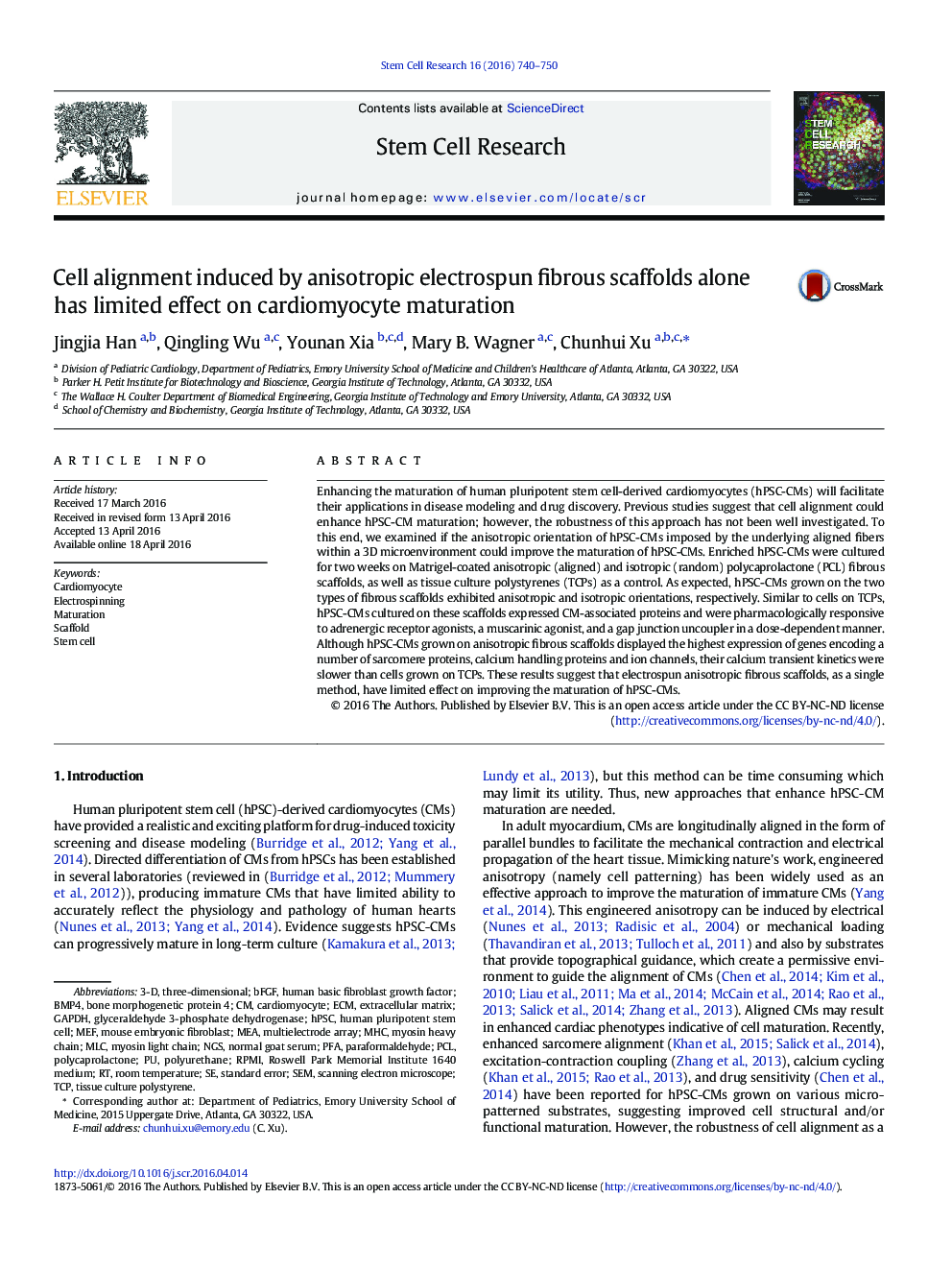| Article ID | Journal | Published Year | Pages | File Type |
|---|---|---|---|---|
| 2094030 | Stem Cell Research | 2016 | 11 Pages |
•Aligned electrospun fibrous scaffolds induce efficient cell alignment.•Cells on the aligned fibrous scaffolds have improved sarcomere organization.•Cells on the aligned fibrous scaffolds have increased expression of cardiac genes.•Cells on the aligned fibrous scaffolds have appropriate pharmacological responses.•Cell alignment alone does not improve calcium handling properties.
Enhancing the maturation of human pluripotent stem cell-derived cardiomyocytes (hPSC-CMs) will facilitate their applications in disease modeling and drug discovery. Previous studies suggest that cell alignment could enhance hPSC-CM maturation; however, the robustness of this approach has not been well investigated. To this end, we examined if the anisotropic orientation of hPSC-CMs imposed by the underlying aligned fibers within a 3D microenvironment could improve the maturation of hPSC-CMs. Enriched hPSC-CMs were cultured for two weeks on Matrigel-coated anisotropic (aligned) and isotropic (random) polycaprolactone (PCL) fibrous scaffolds, as well as tissue culture polystyrenes (TCPs) as a control. As expected, hPSC-CMs grown on the two types of fibrous scaffolds exhibited anisotropic and isotropic orientations, respectively. Similar to cells on TCPs, hPSC-CMs cultured on these scaffolds expressed CM-associated proteins and were pharmacologically responsive to adrenergic receptor agonists, a muscarinic agonist, and a gap junction uncoupler in a dose-dependent manner. Although hPSC-CMs grown on anisotropic fibrous scaffolds displayed the highest expression of genes encoding a number of sarcomere proteins, calcium handling proteins and ion channels, their calcium transient kinetics were slower than cells grown on TCPs. These results suggest that electrospun anisotropic fibrous scaffolds, as a single method, have limited effect on improving the maturation of hPSC-CMs.
